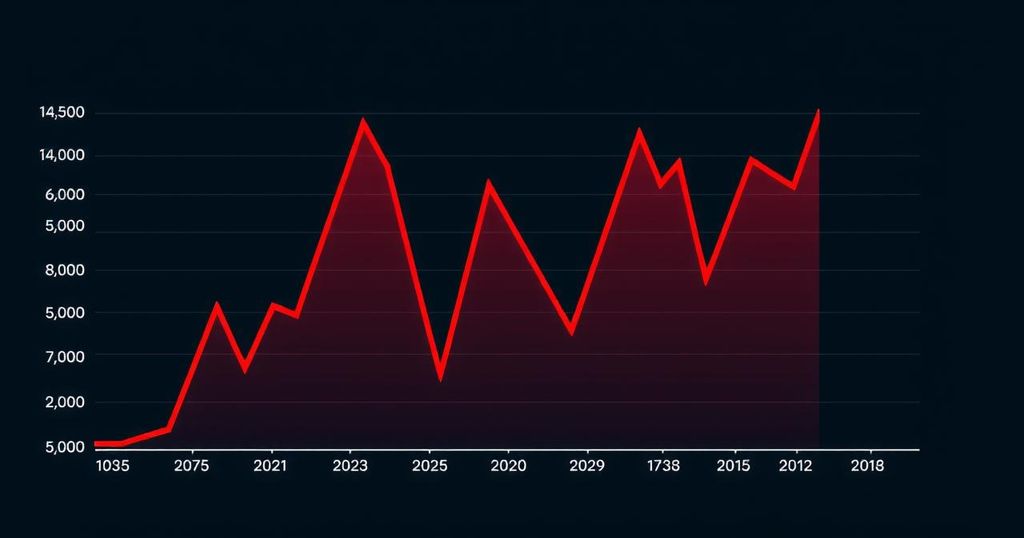Understanding Bitcoin Flash Crashes and Their Impact on Investors
A Bitcoin flash crash is a rapid and significant drop in the cryptocurrency’s price, often instigated by large sell-offs from major investors, known as whales. This phenomenon highlights the ongoing volatility within the crypto market, even for established assets like Bitcoin. Investors need to understand the triggers to avoid panic and make informed decisions. Despite their stark impacts, flash crashes may present buying opportunities and serve as stress tests for market resilience and exchange infrastructure improvement.
A Bitcoin flash crash refers to an abrupt, significant nosedive in Bitcoin’s market price, lasting just a brief period before a return to normalcy. This phenomenon is often triggered by specific market conditions, most notably when a group of large investors, known as “whales,” decide to unload their Bitcoin holdings all at once. This flood of supply can overwhelm buyers and result in rapid market losses—often amounting to billions in mere minutes.
Despite Bitcoin’s establishment as a leading cryptocurrency worth trillions, flash crashes remain indicators of the market’s ongoing volatility. This inconsistency persists even with seasoned investors, highlighting the crucial need for new entrants in crypto to grasp the dynamics behind such price crashes. Without understanding the underlying reasons, moments of panic can lead to impulsive trading decisions and losses.
Unlike traditional stock exchanges, which utilise circuit breakers to temporarily halt trading during drastic price movements, Bitcoin markets lack such mechanisms, complicating efforts to control swift market downturns. This adds an extra layer of unpredictability for investors.
Understanding flash crashes can be intricate. Generally, a combination of factors converge to trigger these events. For instance, leveraged traders facing sudden market shifts may see their positions automatically liquidated to cover loans. This snowballs into a cascade of selling pressure, resulting in steep price drops.
Moreover, algorithmic trading can exacerbate the issue. When trading bots react to odd market conditions or triggers, they might execute a series of sell orders, pushing prices down further. Insufficient liquidity can also play a role; if more sellers flood the market than buyers can absorb, it can lead to rapid devaluation of Bitcoin. In rare cases, technical failures, such as server outages, can distort trading data and lead to erratic price behaviour, intensifying volatility. Panic selling often ties directly to negative news events; fear drives simultaneous sell-offs, drastically lowering market prices.
Flash crashes might initially evoke dread among investors but they can also offer hidden advantages. For example, the steep drops can create exceptional buying opportunities for those ready to take advantage of discounted prices. Furthermore, these events serve as tests of the market’s resilience and furnish exchanges with crucial insights to improve their systems and customer protections.
Examples of Bitcoin flash crashes are unfortunately numerous. One of the most notorious occurred in June 2011 when the Mt. Gox exchange was hacked, resulting in plummeting Bitcoin prices from $17 to just a penny. More recently, on March 18, 2024, a transient crash on BitMEX witnessed Bitcoin’s valuation dwindling to $8,900 in two minutes—though it later rebounded swiftly.
The COVID-19 pandemic also caused a significant downturn in March 2020, with Bitcoin’s price falling from above $9,000 to under $4,000 in a shocking 48-hour stretch. Recovery from these price shocks can take time, underscoring the necessity for knowledge about effective risk reduction.
While predicting flash crashes remains near impossible, investors can implement measures to shield their portfolios. Setting up price alerts for crucial thresholds allows for proactive responses in tumultuous conditions. Additionally, employing stop-loss orders can provide a safety net, though these aren’t infallible during extreme slumps. It’s advisable to maintain a portion of capital ready for strategic purchases during price drops, and importantly, to avoid confining major holdings to exchange accounts, as those are vulnerable during market turmoil.
Ultimately, diversifying investments, utilising stop-loss orders, and limiting exposure to leveraged trading are sensible strategies to mitigate risks associated with sudden Bitcoin market declines. Understanding and preparing for flash crashes can significantly bolster investor resilience in the ever-evolving cryptocurrency landscape.




Post Comment